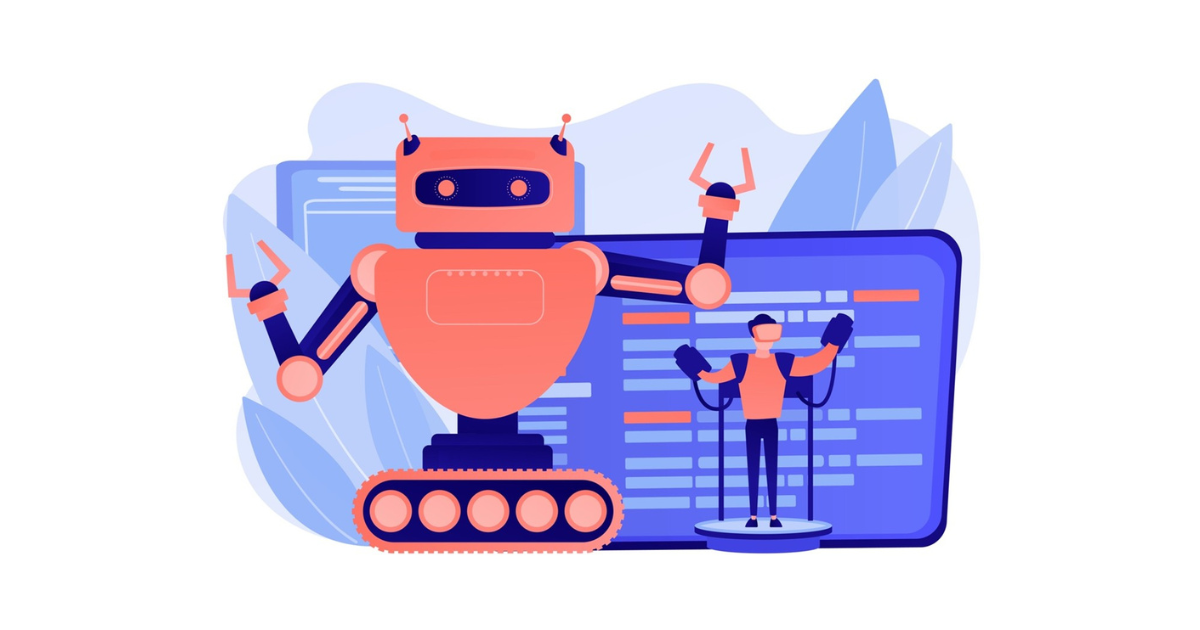Human-Centered AI For eDiscovery is Important - Reveal is All-In
Recently, the Artificial Intelligence (AI)-enabled future of legal has gone from hype and hypothesis to reality. Everyone from grandmas to colleagues are talking about AI. And its impact on industries that previously were unscathed by automation is palpable. Generative AI and Natural Language Processing enable AI-powered legal technology to leapfrog legacy tech. Creating solutions legal can no longer ignore.
Advances in machine learning and artificial intelligence-powered technology has the legal industry talking. Not necessarily in a good way. There is a lot of Fear, Uncertainty & Doubt (FUD).
As I recently discussed in Legal Tech news, the robolawyers are not merely coming but are here. But for legal that does not equate to a terminator donning a three-piece Brooks Brother’s suit and taking our jobs. Rather, the future for legal is much more like Ironman, where advanced tech supercharges the human in the driver’s seat.
Simply put, many of the detractors and folks swimming in a sea of FUD miss one critical point for legal. Modern AI makes humans more important and not less. The same can be said about eDiscovery. Human-Centered Artificial Intelligence (HCAI) powered by NLP, Machine Learning, and deep learning is flipping the script. And Reveal is all in on it in a big way!
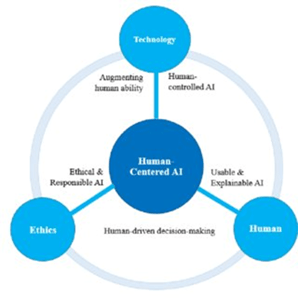
What Exactly Does Human-Centered AI for eDiscovery Mean?
The most powerful AI today, when applied to complex areas like legal, is reliant on human interaction or interpretation. In fact, the long-term success of AI is contingent on realizing how critical the human is in AI. IBM has an entire webpage devoted to the importance of humans to the future of AI and one quote caught my eye:
“Despite increasing levels of automation enabled by AI—whether it’s AI driving our vehicles, designing our drugs, determining what news and information we see, and even deciding how our money is invested—the common thread among these systems is the human element. AI’s long-term success is contingent upon our acknowledgment that people are critical in its design, operation, and use. — IBM
So, what exactly does it mean for an AI model or AI-powered software to be Humancentric AI?
Human-Centered AI (HCAI) is aimed at creating AI systems that amplify and augment rather than displace human abilities. The four key pillars of HCAI, as I noted in a recent Legal Tech News article, include adaptability, usability, built-for-human needs, and human-centered development.
- Adaptive: Built with features like privacy, security, transparency, interpretability, fairness, explainability, and accountability.
- Usable: Is the AI or AI-powered technology easy to use for the human end user? iPhone easy vs. complex black box.
- Human needs: does the AI address a major human challenge or issue relating to human well-being?
- Entire development cycle: Is the AI human-centered throughout the entire development cycle? From Human-Centered AI design to working systems that are continuously learning with human input.
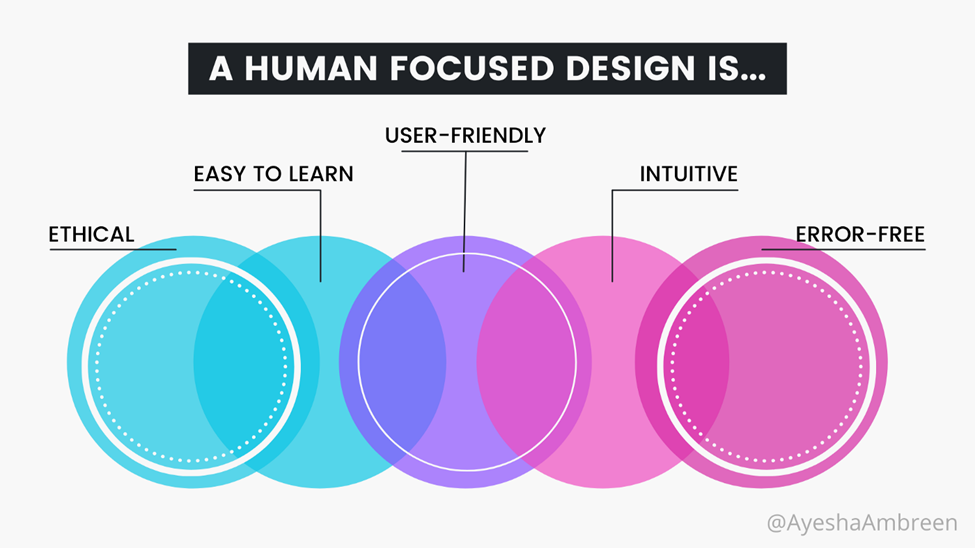
How is eDiscovery Using Human-Centered AI?
HCAI is a relatively new discipline, but for eDiscovery specifically, we have been employing the key tenets for quite some time. Human cognition is critical in even the most advanced legal AI on the market. Because AI lacks the ability to do the critical reasoning so central to legal.
The hallmark of HCAI is a combination of powerful computing systems of AI-powered technology that has an intuitive way for users of varying degrees of technical competence. You do not need a PhD in computer science to gain insights and amplify and augment decision-making.
New AI-powered legal technology and especially eDiscovery tools embrace this transparent approach. They no longer shroud solutions in lambda calculus and advanced statistics (hello F score, precision, and recall). Next-gen Human-Centered AI solutions are all about making life easier for human users.
For eDiscovery use simpler language and seamless UX to appeal to a wider user base. The learning algorithms are more powerful, but the tech is designed to be accessible by legal professionals. Even absent a data sherpa to guide them.
This approach, combined with the proliferation of AI-powered technology in people’s personal lives (Google, Uber, GPS, and even spam filters) is demystify AI for legal.

How is Reveal All-In on Humancentric AI for Legal
Reveal has been in the vanguard when it comes to Human-centered AI for eDiscovery and legal. Our data scientists like Irina Metveeva work with an amazing team of product designers to marry the function of the industry’s most powerful AI in a form that is intuitive and easy to use. Even if you are not a statistician or fluent in lambda calculus.

User-friendly Data Visualizations
Not everyone is comfortable interpreting data from a spreadsheet or relational database. Reveal-Brainspace visualizations make understanding what is going on in your data accessible. Even if you are a non-technologist, insights are readily available.
Reveal-Brainspace Cluster Wheel Visualization
The Brainspace cluster wheel was mind-blowing when I first saw it nearly a decade ago. The concept clustering of Brainspace was presented in an intuitive and easy-to-interpret visual. This was more accessible to lawyers and did not require linguists or statisticians. The entirety of a data set’s key concepts was easily understandable at a glance.
This visualization offered insights across the entire data set no matter how vast or complex machine learning. Even when starting with zero insights for a case I could begin to quickly untangle key facts or simply validate assumptions. This visualization brought powerful Machine learning insights to the surface in a simple-to-use way that resonated with legal teams.
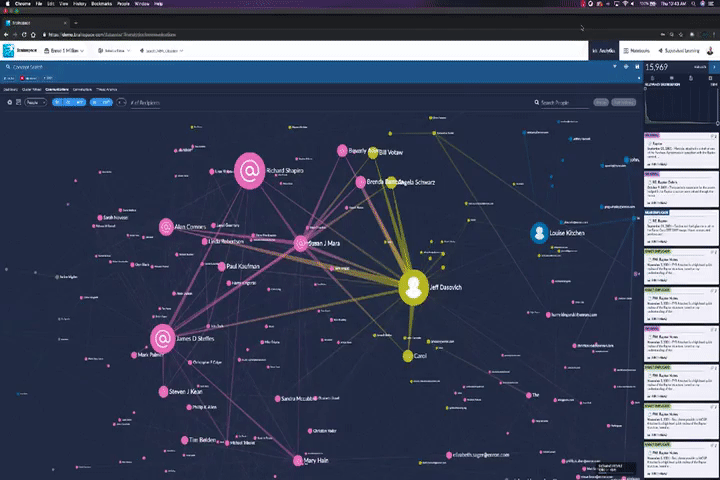
Communication Map Visualization
The communication map presents unsupervised learning insights in an easy-to-understand and interactive graphic. This visual focused on social network analysis, who was communicating to who, and with what frequency. The end users could validate and prioritize custodians and review based on the insights from this map. Dramatically accelerating review and saving time and money.
Interactive Dashboards
Interactive dashboards in Reveal-Brainspace were designed to offer insights about data and communication patterns. Within even the vastest data sets, users could find connections as well as anomalies at a glance.
Like a cockpit for a jet, the dashboards were designed to be humancentric in structure and form. It brings key insights to legal team members of varying degrees of technical acumen. Empowering them to make more informed decisions.
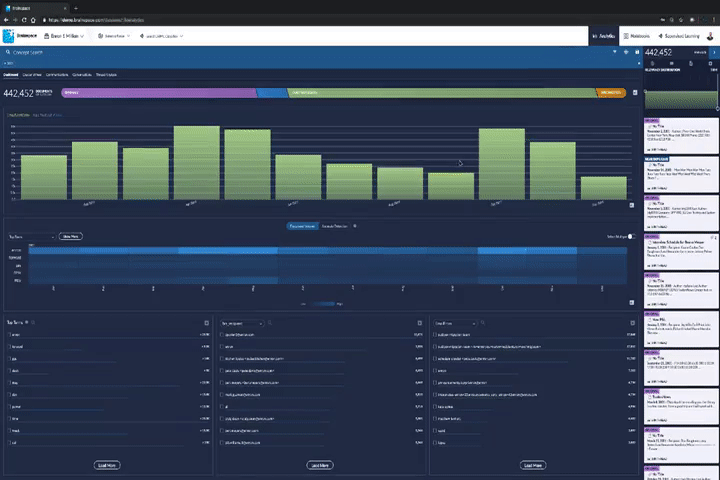
Baked-In and Intuitive AI
Early on AI in legal made the mistake of making workflows challenging and dependent on data scientists, statisticians, and linguists. As a result, legal teams were wary about things like ease of use and explainability to opposing counsel, regulators, or the bench. The AI process was too foreign and dependent on external resources for many law firms or in-house teams to adopt it.
At Reveal we understood that seamlessly integrating the AI into the main eDiscovery workflow was key to driving adoption. With Reveal, Machine Learning and AI models (off-the-shelf and bespoke) are easily woven into the main review platform.
Concept Search at Your fingertips
From the outset of interacting in Reveal search you have the option to conduct concept or keyword searching, or even a combination of both. This enables users to tap into advanced machine learning-powered insights without a separate process. Using concept search delivers a broader set of results.
Some relate to the top ten concepts associated with the key concept but do not contain the word itself.
Baked in Sentiment Analysis, Linguistic Analysis, and AI Models
Rather than creating an alternative AI workflow, Reveal brought the AI front and center in the main review platform. Powerful AI is baked into search functionality and easy to toggle on and off Ai models.
By leveraging natural language processing – like Apple uses with Siri – you can uncover hidden connections between people, places, and things.
Legal teams can easily access insights and create stories and events from data. Using the combined power of linguistic intelligence, content classification, and emotional intelligence users can analyze patterns and make meaningful connections.
Active Learning that Works with Human Users
The AI and Machine Learning models in the Reveal platform and Brainspace are built to work in concert with humans and not in lieu of them. Our Active learning is built explicitly to rely on a legal human in the loop to make decisions and refine the algorithm. The AI models make suggestions that the Human user interacts with, teaching the model how to make better suggestions.
At the end of the day, it is the human that decides what to do with those suggestions. Continuing to remain firmly in the driver’s seat.

AI Model Library to Empower Non-Data Scientists
Advanced AI Models are designed to be accessible in Reveal. We took inspiration from consumer-grade AI-powered applications like Netflix. Making the user experience of interacting with AI seamless and approachable. Even with Advanced AI, the human is in the driver seat with this Human-Centered AI for legal.
Like Netflix, our list of AI Models continues to grow, and most are included as part of your subscription. Our AI Model Marketplace offers 30+ ready-to-go Models that can detect a range of compliance & ethics behaviors. Models range from fraud to discrimination, targeting sensitive data like PII and privileged conversations.
Just like selecting a movie, you can read the title, description, and some facts about the AI Model. Everything a user needs is available in a one-shop-stop. Everything can quickly be accessed and integrated without needing extra IT or data resources on the user’s end.
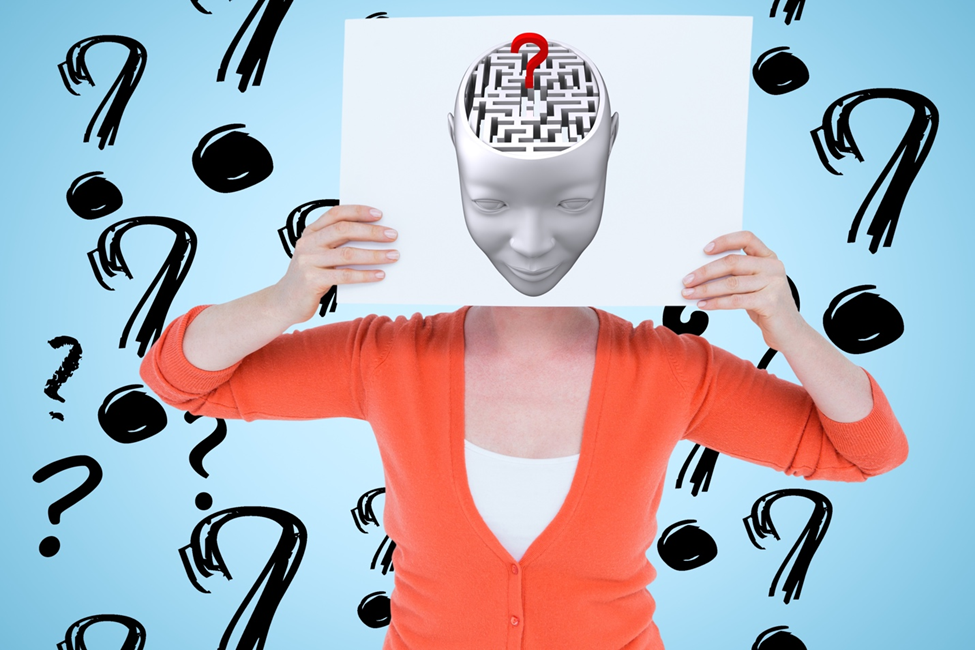
What Does the Human-Centered AI Future of eDiscovery Hold?
As AI research learns and big data continues to expand in the complexity of data sources and volume, the need for AI will move from “nice to have” to “need to have.” But the good news for legal professionals is that in eDiscovery that means the human in the driver’s seat becomes more important and not less.
The forward-looking AI initiatives at Reveal focus on bringing more AI functionality to the average reviewer. Not just for the advanced technology wonks.
The aim is to integrate powerful algorithms and advanced AI Models in a seamless way that keeps the legal human in the loop. We also have a human-centered approach to design that puts the end user at the top of our minds when we design user interfaces and functionality.
The days of the black box being an acceptable way to interact with AI for legal are in the past. End users have seen intuitive and humancentric consumer-grade AI and expect the same in their professional solutions.
The future of AI in legal is increasingly human-centered. And much like Google or Netflix, the backend is getting more powerful, by the day. But the front end is being built with a focus on being something humans want to use!

